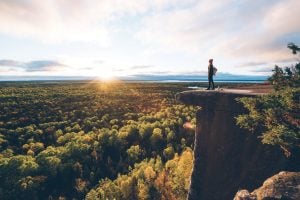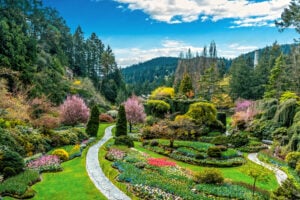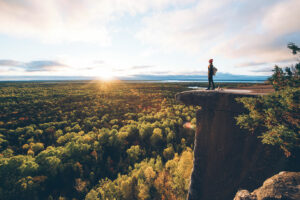
Travel
How to stop a gold rush
The new movement building flourishing tourism hubs across Canada – one sustainable example at a time
- 3297 words
- 14 minutes
Travel
The senior vice-president of destination development for Destination Canada shares why tourism that’s good for communities is good for Canada

Regenerative travel is defined as a kind of tourism that leaves a place better off, something that can play an important role in the future of Canadian tourism, says Gracen Chungath. As senior vice-president of destination development for Destination Canada, the Crown corporation tasked with promoting tourism in Canada, Chungath is developing a nation-wide strategy for regenerative tourism. To create a sustainable future for tourism, she says, it’s important to recognize that each place is unique, so communities must come together and identify their needs, opportunities and challenges. Canadian Geographic spoke to Chungath to learn more about destination stewardship and what that might look like in practice across Canada.
Destination stewardship, rather than development, is a new way of looking at tourism. It’s about looking at what we’re doing [in tourism] and asking the question, “What does this future look like for us?” Coming from a non-tourism background, I’ve spent much of my first year just listening to what communities are saying. I’m learning what they are doing, what’s working and what needs to change. I’ve learned from experts including Bill Reed of the Regenesis Group, who has been working on regenerative development. I want to learn as much as I can and collaborate on solutions that will work.
Tourism traditionally has always been about the visitor. This is about flipping it, and focusing on the needs of the local community. What this means is places are moving away from a system that judges the success of tourism by counting the numbers of heads in beds and instead adopts a model that looks at things more holistically. People want their lives and community enriched by tourism. And done right, tourism can offer good jobs and as well as help rebalance ecosystems and biodiversity damaged by more extractive industries. One example that’s happening across Canada is that communities are looking at developing brownfields (vacant commercial and industrial properties). They’re finding ways to clean up land that was left in a mess by industries like mining or hydropower and are building it into something to be enjoyed, while at the same time repairing the environment.
We want to develop long-term resilience that considers the wealth and wellbeing of communities. To do that we identified six outcomes we’re looking for: Tourism businesses that are deeply embedded in the communities they are in; good, inclusive tourism jobs that people want; tourism activities that help local cultures thrive and that contribute to ecological abundance and rebalancing of the carbon cycle; and Indigenous tourism that’s managed by Indigenous people. Finally, we need to attract guests who will be enriched by visiting Canada—not just people who will spend money, but visitors who will be respectful and treat a host destination well.
Right now, as we recover from the COVID-19 pandemic, businesses and communities are operating from a place of scarcity. Places have been closed to visitors, people haven’t been working and they’re just trying to survive. If we came in and suggested they invest money into something called regenerative tourism, it wouldn’t work. It can’t be a process where someone else makes the decisions and does it for them. We can’t tell a community they need to change what they are doing. But we can help them when they identify things they want to work on.
We ask the community what they aspire to, what they are proud of and what they want to share. From there, locals can determine what it is they want tourism to do. For example, Haida Gwaii said they’re happy with the number of visitors they get, but if they could extend their season by a couple of weeks it would offer better employment options for their people. So they’re working on seasonal dispersion. In the Thompson Okanagan, the community values their rich history of agriculture, so they wanted to focus on holistic sustainability and find ways to care for people and the land that way. This is a process that needs to be driven by the community—because that’s who was being left out. From there, Destination Canada can offer support for the community’s goals, but it has to be ground-up work.
Answers have been edited and condensed for clarity.
Are you passionate about Canadian geography?
You can support Canadian Geographic in 3 ways:

Travel
The new movement building flourishing tourism hubs across Canada – one sustainable example at a time

Travel
Jill Doucette, founder and CEO of Synergy Enterprises, shares insights on new trends in the tourism industry and why there’s reason to be optimistic about a sustainable future for travel

Travel
What tourism’s shift to sustainability, reconciliation and regeneration means for the rest of us

Travel
Un nouveau mouvement créateur de pôles touristiques florissants dans tout le Canada – la durabilité, un exemple à la fois